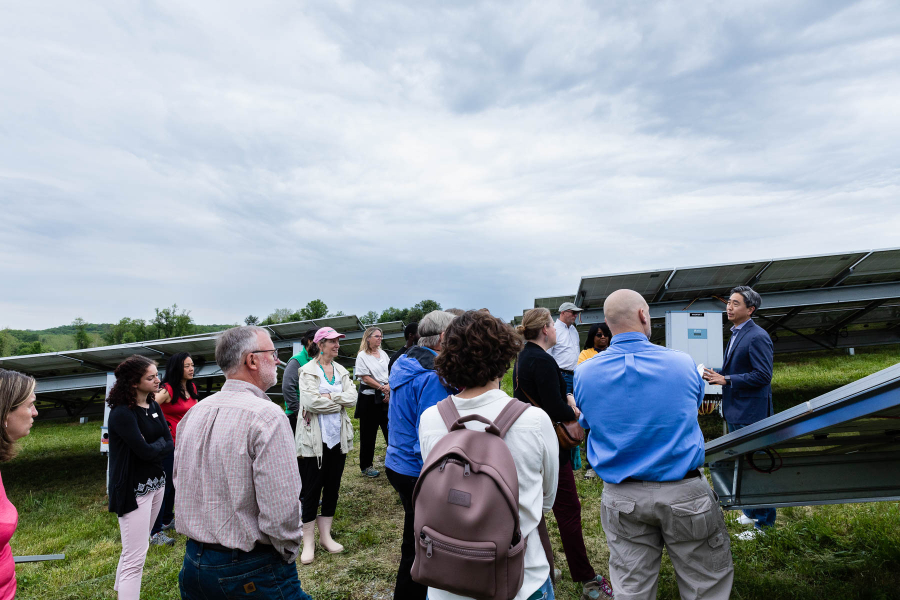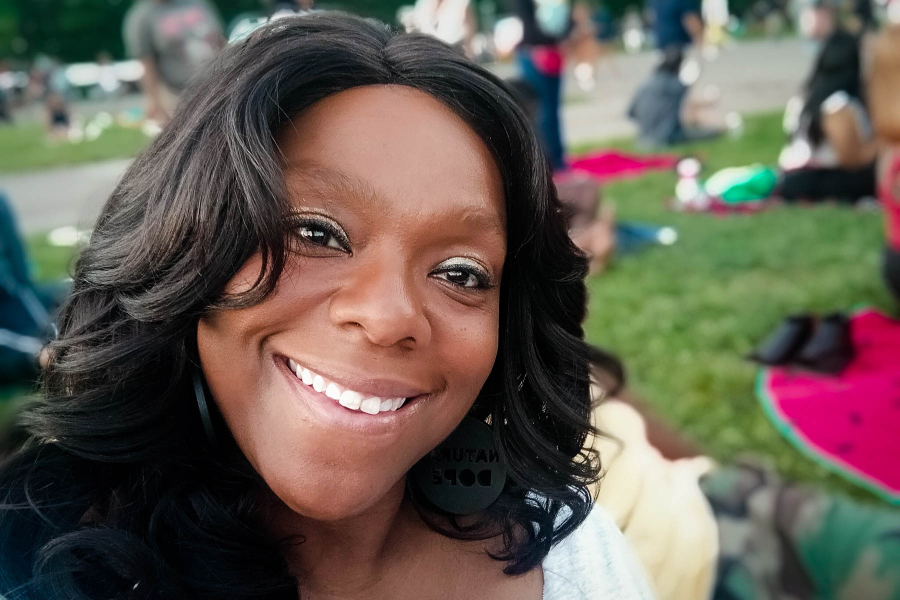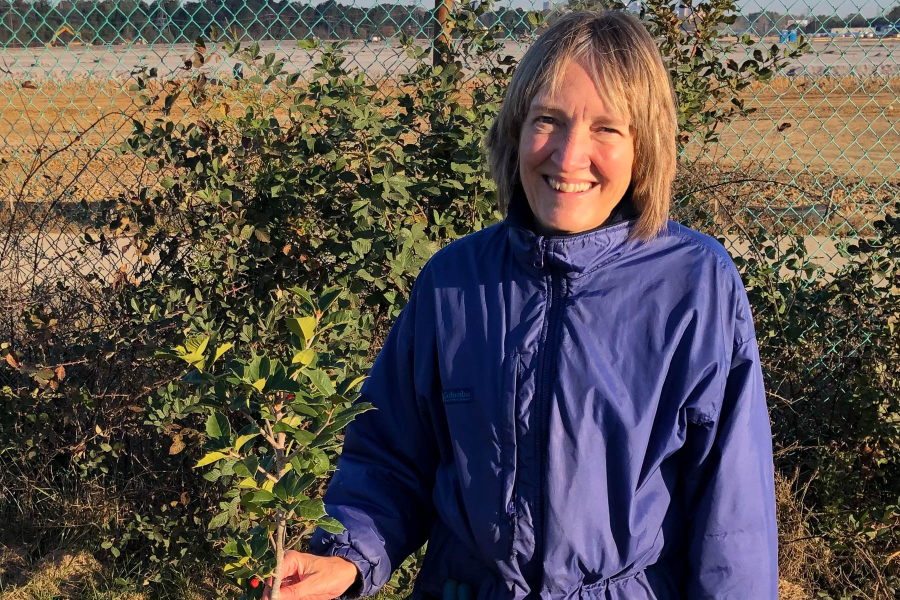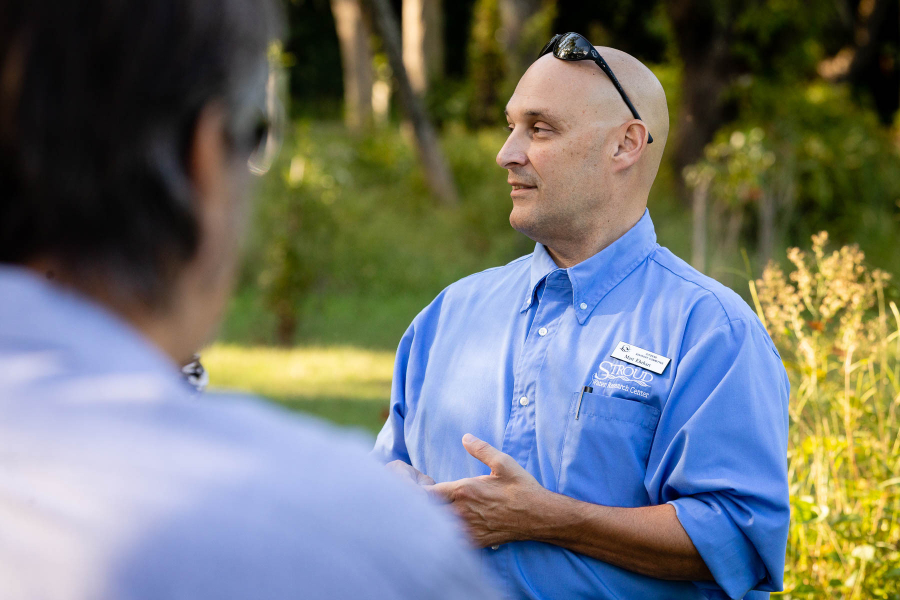A conversation with the leadership of the Citizens Advisory Committee
Committee focuses 2023 priorities on equitable access to grants, forest land conversion and healthy water quality

The Citizens Advisory Committee (CAC) is a group of volunteers representing communities and stakeholders from across the Chesapeake Bay watershed. Divided into three subcommittees—Stewardship & Engagement, Conservation & Land Use and Water Quality—the committee travels across the region to learn and discuss state and local priorities related to the Bay and advise leadership within the Chesapeake Bay Program.
Each year, the subcommittee identifies a specific priority topic to focus their work. The subcommittee hosts a panel of outside experts during one of their quarterly meetings to learn more about the challenges and opportunities for the Chesapeake Bay Program to advance their partnership approach on the topic. The findings of the panels comprise the key advice and recommendations that the CAC submits each year during the annual Executive Council meeting.
We interviewed the chair of each subcommittee to learn more about the expertise they bring to the CAC and how their unique panel is helping to restore the Bay!
BeKura Shabazz, Stewardship & Engagement Subcommittee Chair

BeKura Shabazz, CAC stewardship & engagement subcommittee chair, brings expertise as a community engagement liaison and facilitator. She is the founder of First Alliance Consulting, LLC, a community consulting group that helps people navigate criminal, civil and administrative justice systems.
As a CAC member, Shabazz brings expertise in community building to her subcommittee. “I continue to remain in this space as an agent for change, to promote actual environmental justice that centers people, personal wellness and DEIJ-A (Diversity, Equity, Inclusion, Justice and Accountability),” Shabazz said.
Last year, the Stewardship and Engagement Subcommittee hosted a panel of community organizations working on the frontlines of environmental restoration and community engagement, to hear what barriers prevent these groups from accessing grants to fund their work. From this panel, the subcommittee produced a detailed report of findings, outlining the stringent grant application requirements that panelists identified as impediments, along with potential solutions to make grants more obtainable for small organizations applying.
“Most funders think releasing a request for proposals is access, not taking into account the requirements that are being requested are full of barriers that prevent many organizations from applying,” said Shabazz.
The Stewardship & Engagement Subcommittee convened a second panel at the CAC quarterly meeting held in February of this year. This panel continued the discussion on equitable access to grant awards and administration practices, but this time, with major funders present: the National Fish and Wildlife Foundation, the Chesapeake Bay Trust, and the Chesapeake Bay Funders Network.
The goal of the panel was to hear what internal accountability exists in these organizations to ensure that grant awards are equitable and accessible to those applying. Based on the panel’s discussion, the CAC is considering ways to improve the grant making process, such as developing a model equitable grant tool to be shared with grant administering organizations.
“Being able to evaluate grant funding processes and giving honest intelligent feedback and suggestions, is one way my subcommittee promotes actual access and inclusion when it comes to grants,” said Shabazz.
Ann Jurczyk, Conservation & Land Use Subcommittee Chair

Ann Jurczyk, conservation & land use subcommittee chair, brings a range of experience and expertise to the CAC. She is the Director of Outreach and Advocacy for the Chesapeake Bay Foundation (CBF) in their Virginia office, as well as a Level 2 Chesapeake Bay Landscape Professional with experience in rain gardens, edible forests and conservation landscaping.
The Conservation & Land Use Subcommittee’s 2023 priority topic is on land conversion throughout the watershed, where forested and agricultural lands become developed, making Jurczyk a perfect person to lead the subcommittee.
On average across the United States, one acre of land is converted from natural space such as woods to a development every sixty seconds. The Chesapeake Bay watershed is no stranger to increasing development pressure, but the chair remains hopeful.
“Despite an almost 50% increase in people moving into the watershed in the past 70 years, CBF’s State of the Bay score remained the same—we’re not sliding backwards,” said Jurczyk.
In addition to the obvious impacts of development, like habitat loss, it also creates vast amounts of impervious surfaces, such as roads, roofs and parking lots. In impervious areas, stormwater no longer seeps into the ground, but instead travels across the landscape, picking up all forms of pollution, until it reaches a storm drain or nearby waterway.
“Stormwater runoff is the most expensive and hardest of the nutrient and sediment sources to control," said Jurczyk. “We have to develop smarter so we have affordable housing that’s close to transit corridors, to place utility solar farms on degraded land, not on our highest value resource lands. These challenges keep me up at night.”
The subcommittee is currently coordinating a panel on their priority topic that will take place at the next CAC quarterly meeting on May 25th. The objective is to understand how land use is incorporated into the Chesapeake Bay Watershed Agreement and jurisdictional planning, and to identify state-level incentives to protect agricultural and forested land.
Matt Ehrhart, Water Quality Subcommittee Chair

Matt Ehrhart, water quality subcommittee chair, manages the watershed restoration program at Stroud Water Research Center. In this role, Ehrhart works with landowners across the Chesapeake Bay watershed to implement practices that benefit local waterways.
“The majority of our implementation occurs in agricultural landscapes, restoring approximately 150 acres of riparian forest buffers and transferring approximately 8,000 acres of cropland to improved soil health management each year,” said Ehrhart.
He and his research team also focus on issues including monitoring and evaluating stream ecosystem improvements, stressors such as neonicotinoids (a form of insecticides) and the impact of the distribution of PFAS (also known as “forever chemicals”) contaminated biosolids on agricultural soils and water.
The Water Quality Subcommittee’s priority topic is to review the progress of practices identified in each jurisdiction’s Watershed Implementation Plan, which is a roadmap for how they will meet reductions in nitrogen, phosphorus and sediment pollution. The subcommittee is in the process of hearing detailed progress reports from jurisdiction representatives.
A panel led by the Water Quality Subcommittee will be held at the CAC quarterly meeting on September 13, 2023. The goal is to identify opportunities for accelerating pollution reduction, based on the successes and challenges shared by the jurisdictions. The subcommittee will also discuss priorities for the Chesapeake Bay Program after the 2025 deadline of the Chesapeake Bay Watershed Agreement.
“While I believe we will need to continue to focus on implementing, let alone maintaining, the Bay TMDL post 2025, I think the real opportunity is to focus on local watersheds and streams," said Ehrhart. “Acknowledging the needs of local watersheds will drive a more complex and more aggregated implementation that is critical to addressing our local water quality, stream ecosystems and the needs of our local communities.”
Future Opportunities for the Chesapeake Bay Program
We asked the subcommittee chairs what opportunities they believe exist for the Chesapeake Bay Program beyond 2025. Their answers reflect the wide expertise and experiences that they bring to the table.
For Shabazz, she believes that the Bay Program has a huge opportunity to do more authentic community engagement. “Engaging with communities like my own who have a deep cultural reliance and attachment to the Bay is something I would like to see us working on in the near future,” said Shabazz. “Science is important but what is science without people?”
Jurczyk, the chair for the conservation & land use subcommittee, sees an opportunity for the partnership to advance its work in the social sciences to understand what behavior changes are practical and doable. “Deep, meaningful engagement that finds the intersection of what a community needs and wants with practices that improve water quality can be done, but it takes time to build trust and change behaviors,” said Jurczyk. “That work needs to be consistently funded.”
Finally, Ehrhart, as the water quality subcommittee chair, believes that the partnership should find solutions that are good for the environment and our community needs. “I believe we can grow food, have homes and places of business, AND have healthy ecosystems, wild places and clean water,” said Ehrhart. “There are significant costs and challenges to getting where we need to be, but I believe, if we have the vision and political will, it is achievable.”
The next CAC quarterly meeting will take place in May in Harrisburg, Pennsylvania. The CAC Conservation and Land Use Subcommittee will host a panel focused on forestland and agricultural land conversion.

Comments
There are no comments.
Thank you!
Your comment has been received. Before it can be published, the comment will be reviewed by our team to ensure it adheres with our rules of engagement.
Back to recent stories